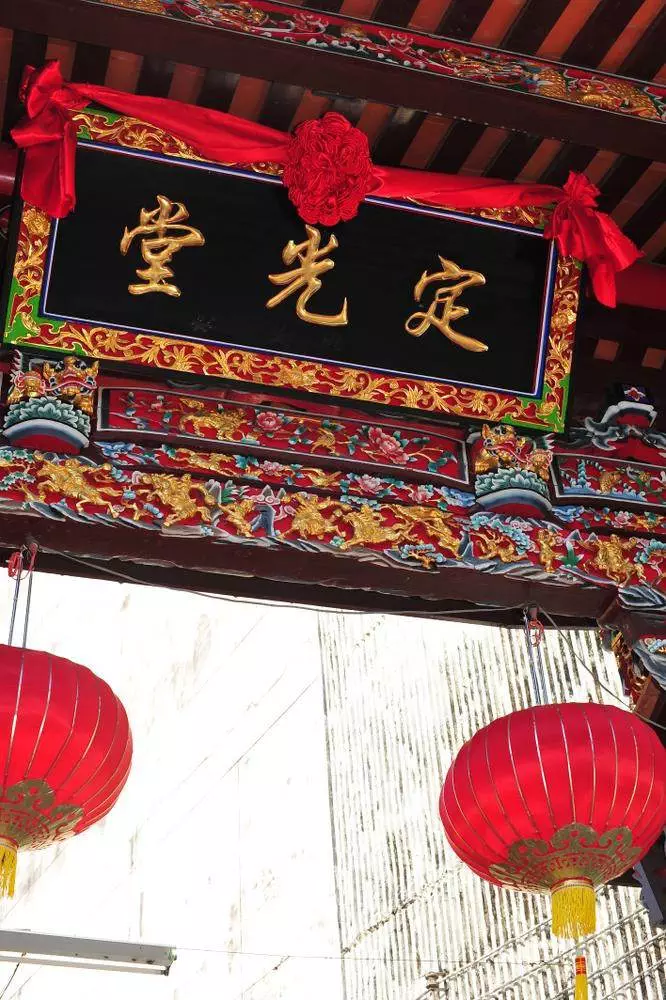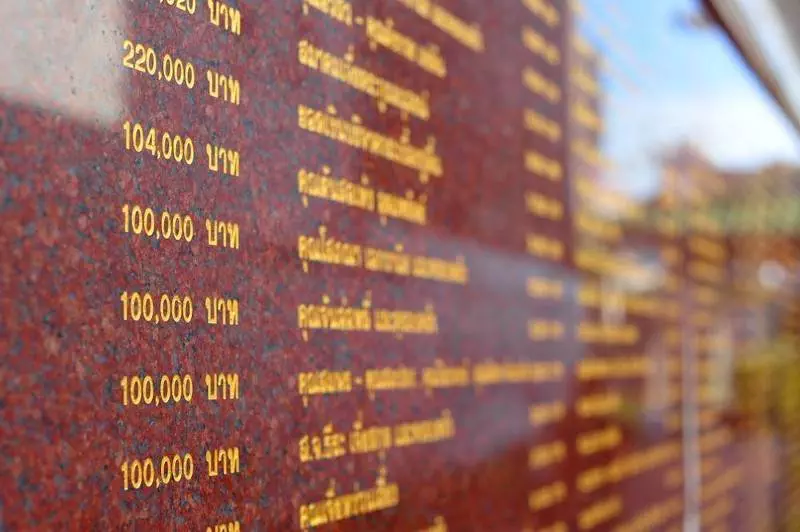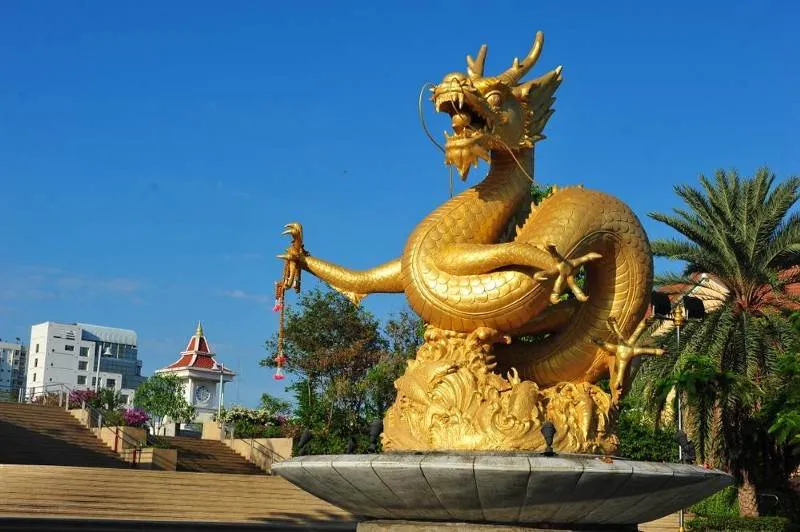Wrapping up a trip to Phuket can mean one of two things: go out with a blast along the island’s many beaches, or take it down a notch and take in some of the lesser-seen sights. I love the beaches, but a walk around Phuket’s Old Town was in the cards.
To be clear, this is far from a complete walk around — you could easily spend an entire day in this walkable area and still not see it all. It’s also an area where most of the shops close as the sun falls. Still, one can stay, eat, and see plenty in this area — and all of it is well away from the more boisterous form of tourism Phuket is known for.
Wikipedia mentions Europeans had their eyes on Thailand’s tin deposits as early as the 16th century. The Hokkian Chinese, who built the old city and mined the island’s tin, also settled the area during the 18th century. Most of the nicer-looking shop houses are over a century old and built in the Sino-Portuguese style, which make the area feel like Penang (to Laura) and Singapore (to me).
Start from the Thavorn Hotel, which is a worthwhile first stop for its museum. I’ll note that it’s a fine place to stay, complete with modern rooms and plenty of space. When you’re ready to go exploring, head left out of the hotel, get some water or snacks at the Family Mart, then cross the street and carry on. (If the Thavorn isn’t quite what you’re looking for, check out the upscale Keemala for exclusive pool villas.)
One of the first places we checked out was an unmarked Amulet Alley (GPS: 7.88337,98.387879) — clearly a locals only sort of venture. It’s hidden, unmarked, and under shade, and you may pass right by it if you’re not looking carefully. That said, of the fifteen or so picnic benches where vendors could set up, only a handful had cases of offerings. It’s only 50 meters long, but a fine, shaded way to get to your next stop: Sang Tham Shrine (GPS: 7.883893, 98.387944)

Also called the Shrine of the Serene Light, this Chinese shrine was first founded by descendants of the Tan Luan Jae family in 1891. Their goal was to create a holy place from which to worship their ancestors, and the Chinese influences can be found in the terracotta-tiled roof, amongst other places.

The shrine was renovated in 1999 and re-opened to the public in 2000 — and the list of contributors is quite large! While the largest contributor was in the hundreds of thousands of baht, one contributor received a spot in immortality for a mere 100 baht (about $3.50 USD). The same panel gives a good summary of the shrine in three different languages.

Shrines do have a shelf life, of course — after a century plus of standing, a few pieces were still in good enough condition to be preserved behind glass.
While small, the shrine is quite peaceful and quiet — no more than a handful of people are around at any time. A sign asks you to not take photos of the shrine’s inside, which is easy enough. Take a few minutes to appreciate some of the many gods on display here, along with the drums:

Unless you’re here to worship, you’ll probably be ready to move on after about 10 minutes, so on we go. Exit though the same gate you entered, then take a right and walk to Yaowarat road. Walk another 100 meters and take another right onto Thalang road — the road most associated with Old Town.
Lined with shop buildings and narrow sidewalks, Thalang road isn’t the easiest one to walk along, especially with cars parked so closely to a one-person-wide sidewalk! Your reward for watching your step are any number of shops that alternate between cafes, souvenirs, and this the ‘oldest herb shop’ in Phuket, Nguan Choon Tong (GPS: 7.884722,98.38789):

Offering both Chinese folk medicine and Thai herbal medicine, the pharmacy would otherwise be something you’d pass right by unless you had need of some medicine. Compact but efficient, there’s just enough on display to reward the casual tourist:

A few of the herbs on display, labelled in English on the inside of the cups. Look for a more extensive shelving system behind the counter for them to pull from as necessary.
Beyond here, Thalang road offers some other delights, albeit of the mainstream sort:

Thai silks, anyone? More than a few places had t-shirts and other cheap souvenirs for sale, which left me hoping this renovated set of shops will continue to be used for more than simply another place to peddle cheap plastic stuff. The busier shops looked to be the ones selling crafts, fabrics, and the like — most of which were patronized by other locals instead of tourists.

A couple of tool shops are around, as well as some printing presses and at least one bookstore (though to be perfectly honest, none of those are what caught my eye in this particular shot…)

If these colors were any more vibrant you’d swear I did something to the colors.

I’m not sure exactly what language bamboo speaks, but here’s hoping they can teach us.

Our turning around point was the entrance to the 72nd Anniversary Commemoration of Queen Sirikit Public Park (GPS: 7.884722, 98.391415). In 2004, Her Majesty turned 72, an auspicious birthday, and 15,000 square meters of land was dedicated to an open space and public park.
Walking back along the opposite side of Thalang road we came across this creation:

Street artists seem to have plenty of wall space to work with — nearby is an excellent map worth taking a closer look at. If you prefer, have a look at the website below instead.
While it’s not a weird way to spend an afternoon, I rather enjoyed a break from the overly touristy parts of Phuket. It’s definitely an interesting look at the history of the area, and given a full afternoon you’ll come to appreciate the culture that’s survived to this day. There’s no one place that’s worth spending lots of time (though I’ll recommend again the Thavorn Hotel Museum)
Ready for more? My friend Sher at Sher She Goes has for a great two-week itinerary to Thailand to peruse.
Name: Phuket Old Town
Address: Along Ratsada, Phang Nga, Yaowarat, and Thalang roads, Phuket (GPS: 7.884863, 98.387494)
Directions: From the bridge that helps cross onto Phuket island, stay on route 402 heading south until staying on 402 requires a right turn (this is about 36km). Stay straight onto Thepkrasattri road and continue straight for about 8 kilometers. Turn right onto Thalang road (just past a Honda shop) and find a place to park or begin meandering.
Hours: shops generally open 9am-5pm, restaurants and bars generally open until 9pm
Admission: free
Phone: n/a
Website: http://www.phuket-maps.com/treasure-map.htm (unofficial but informative)


